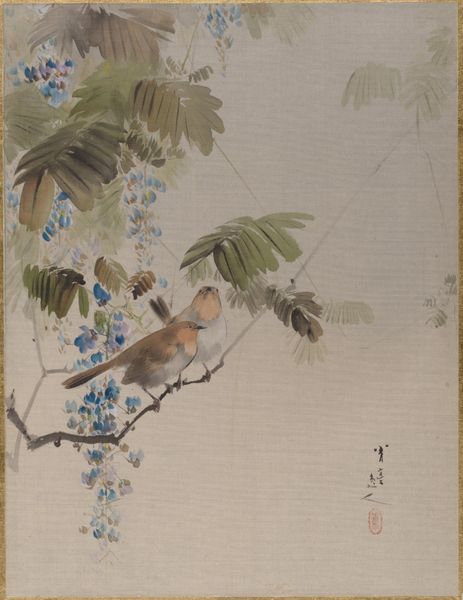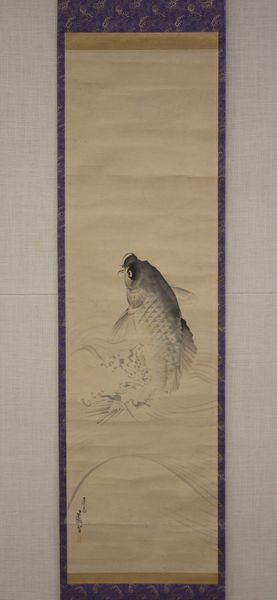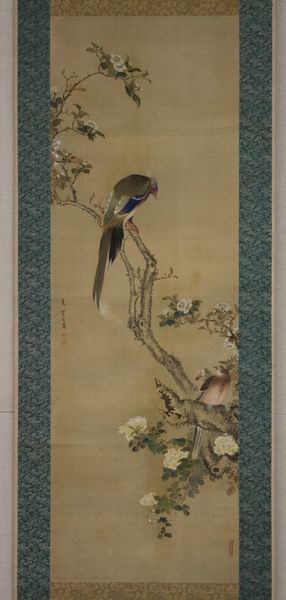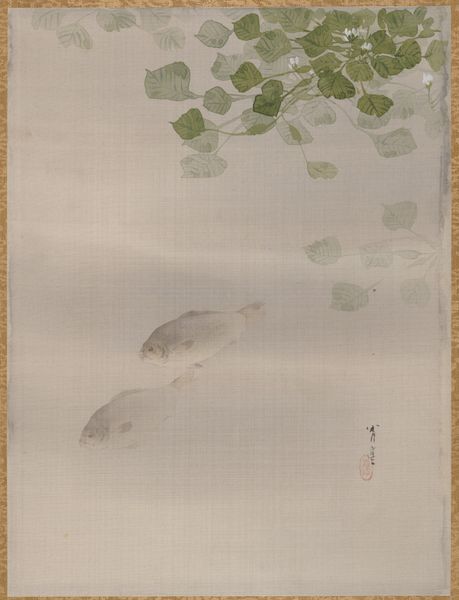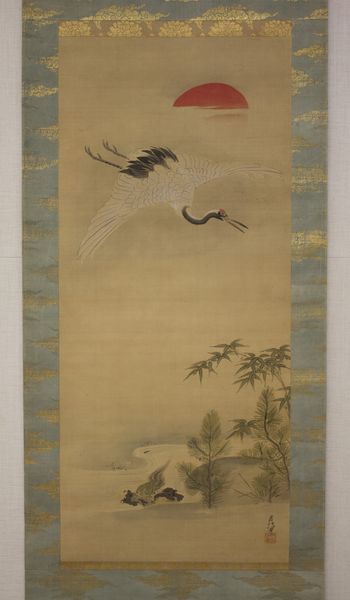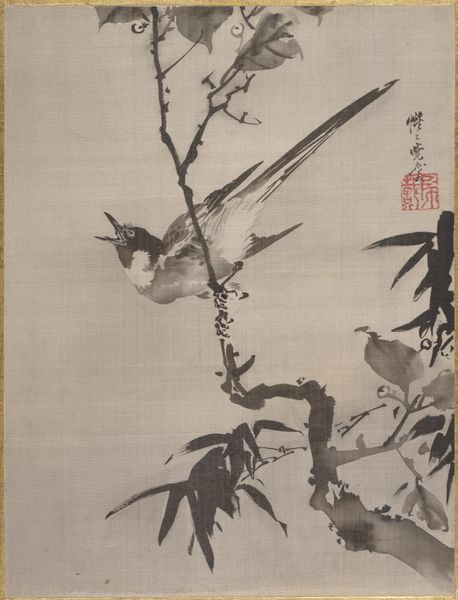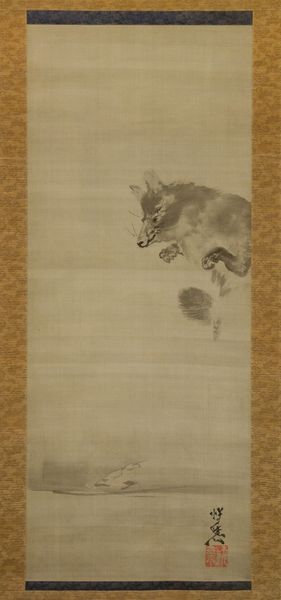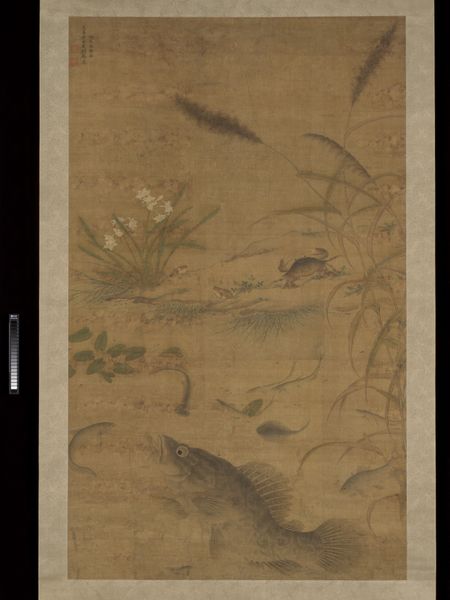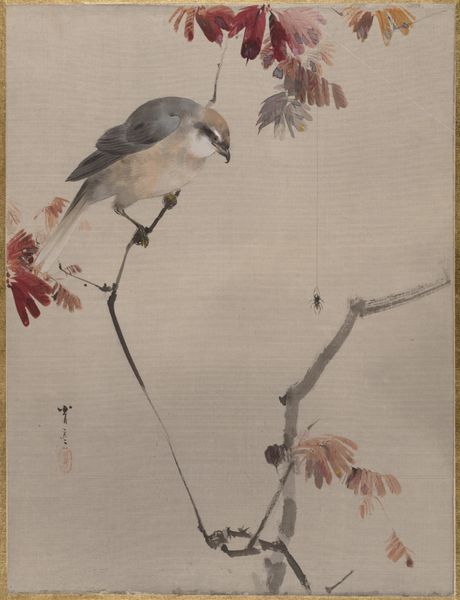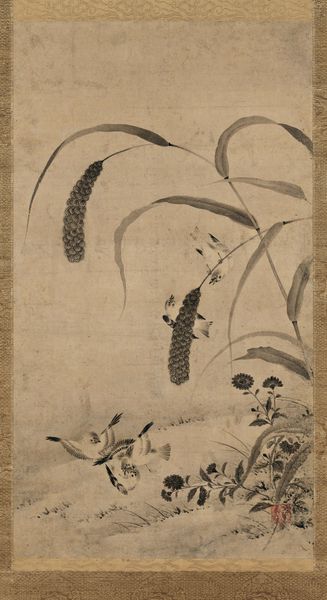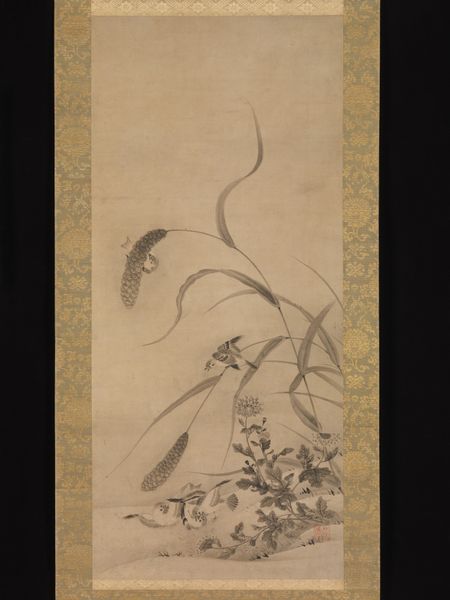
painting, watercolor
#
painting
#
asian-art
#
landscape
#
ukiyo-e
#
figuration
#
watercolor
#
watercolor
Dimensions: 43 x 16 1/2 in. (109.2 x 41.9 cm)
Copyright: Public Domain
Okamoto Toyohiko painted "Monkey and Bee" using ink and color on silk, sometime between the late 18th and mid-19th century. During this period, Japan experienced a flourishing of artistic expression within a rigid social hierarchy. Toyohiko, who belonged to the samurai class, infused his work with keen observations of the natural world. Here, a monkey peers intently at a bee, a moment rendered with subtle humor and pathos. The monkey, often a symbol of mischief, can also represent protection from evil, revealing an interplay of cultural meanings. The light brushstrokes and muted palette evoke a sense of tranquility, yet the monkey’s focused gaze suggests a more complex emotional landscape. This depiction may subtly challenge traditional representations of animals in art, inviting viewers to contemplate the inner lives of non-human creatures. Ultimately, "Monkey and Bee" embodies a convergence of artistic skill, cultural symbolism, and a gentle empathy, reflecting both the societal values and the personal sentiments of its creator.
Comments
No comments
Be the first to comment and join the conversation on the ultimate creative platform.

